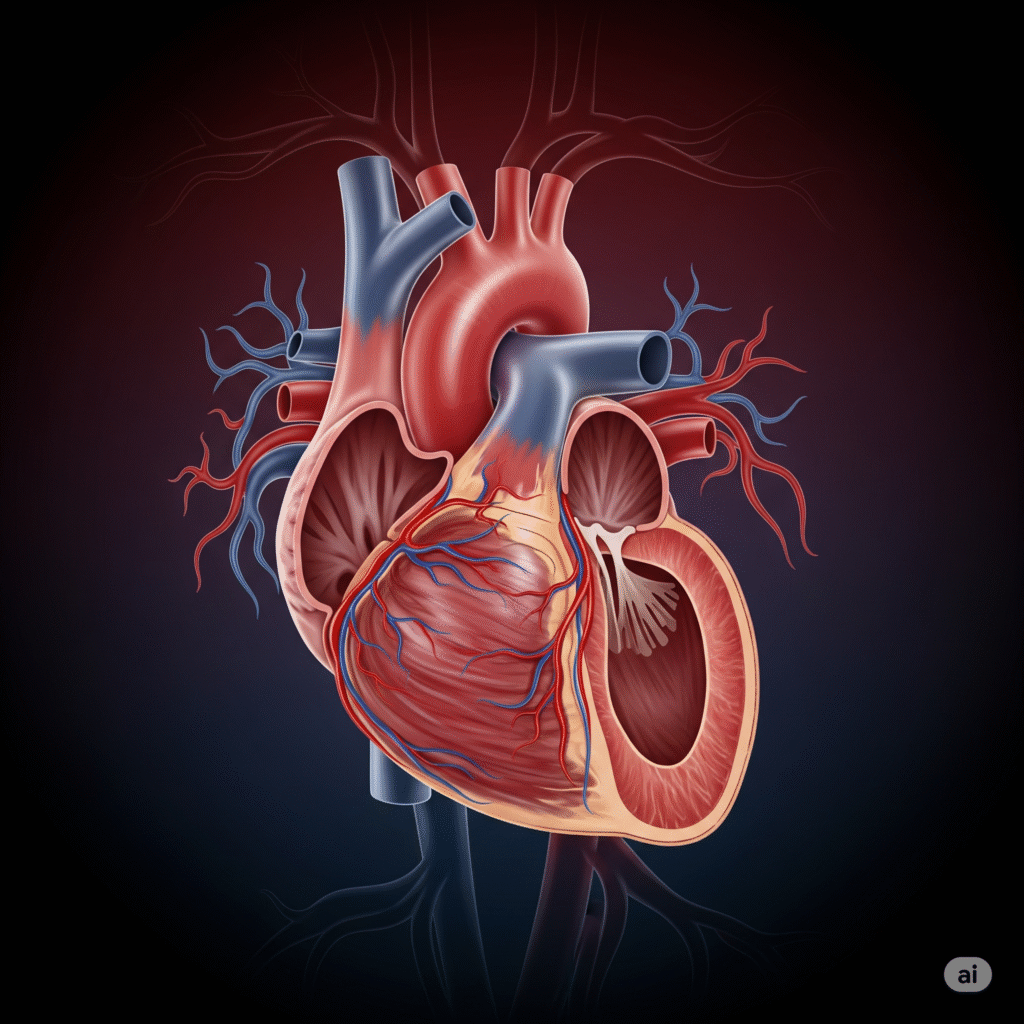Cardiomyopathy
Introduction
There is a group of cardiomyopathy diseases that affect the heart muscle, making it difficult for the heart to pump blood effectively to the rest of the body. It can lead to heart failure, arrhythmia, or other complications. The heart can be increased, thick or hard, it can affect its function. Cardiomyopathy may be inherited or may be inherited due to other conditions such as high blood pressure, infection, or long -term alcohol use

Types of Cardiomyopathy
Dilated Cardiomyopathy (DCM)
Heart chambers are growing and weak, reduce pumping capacity and often lead to symptoms of heart failure.
Hypertrophic Cardiomyopathy (HCM)
The heart muscle becomes abnormally thick, making it difficult to pump blood and possibly die suddenly.
Restrictive cardiomyopathy (RCM)
The heart muscle becomes hard, restricting its ability to properly fill with blood during the rest phase.
Arrhythmias
The right heart muscle is replaced by fat/scars tissue, causing dangerous arrhythmia and low heart function.
Takotsubo cardiomyopathy
Temporary weakening of the left ventricle of the heart due to emotional or physical stress, copying heart attack.
Causes Cardiomyopathy
- Accepting genetic mutation that affects the structure or function of the heart muscle
- Long -term hypertension is putting stress on the heart
- Blood supply decreased due to heart damage coronary artery disease
- The previous heart attack weakens a part of the heart muscle
- Viral infection causes inflammation and heart tissue
- Excessive alcohol consumption weakens and increases the heart muscle
- Some chemotherapy drugs that cause toxic effects on the heart
- Highly active or underactive thyroid affects heart function and rhythm
- Weakening of the heart muscle
- Poorly controlled diabetes damages blood vessels and heart tissue
Thyrotoxicosis
Clinical features of Cardiomyopathy:
shortness of breath
Lungs or tissues have difficulty in breathing due to poor heart pumping and fluid buildup.
Tiredness
Low energy results from low blood flow, which also causes fatigue with mild physical activity or comfort.
Swelling (Edema)
Fluid accumulation in the legs, ankles or abdomen due to disabled heart function and poor circulation.
Irregular heartbeat
Abnormal heart rhythm may cause fluttering, racing, or skipped beats, which increases the risk of complications.
Chest pain
Chest discomfort or pressure, especially during diligence, due to a decrease in blood supply.
Symptoms associated with Cardiomyopathy
- Shortness of breath during exercise or while lying flat in bed
- Shortness of breath during exercise or while lying flat in bed
- Swelling in legs, ankles, feet, or abdomen due to fluid buildup
- Dizziness or lightheadedness, especially during exertion or standing up
- Chest pain or pressure, particularly during physical exertion or stress
- Reduced ability to exercise or perform daily physical tasks comfortably
Fainting or near-fainting episodes, often linked to irregular heart rhythms
- Palpitations or sensation of rapid, fluttering, or pounding heartbeats
Investigations in Cardiomyopathy
- Records the electrical activity of the heart to detect arrhythmia, conduction issues, or signs of heart stress.
Uses ultrasound waves to imagine the heart structure, measuring the shape of the chamber, the thickness of the wall and the pumping function (ejection fraction).
Shows the shape and shape of the heart and examines for fluid in the lungs.
Provides wide images of the heart muscle, detecting scarring, swelling or structural abnormalities.
Used to check the underlying causes such as thyroid problems, infections or cardiac biomarkers (eg, BNP).
Assesses how heart exercise or how performs under drug-induced stress, is useful in detecting functional limitations.
The coronary for obstacles examines the arteries and measures pressure inside the heart chambers.
